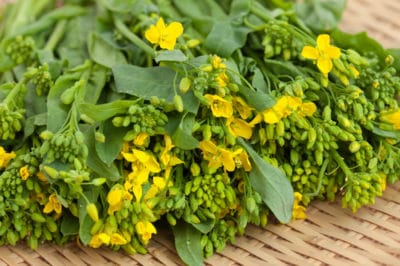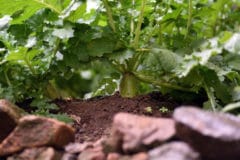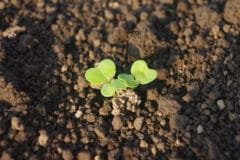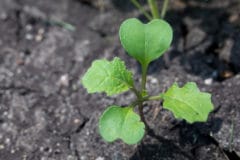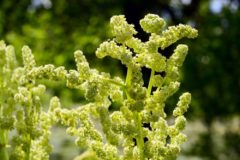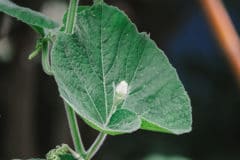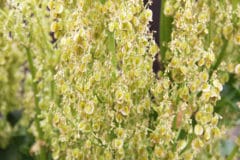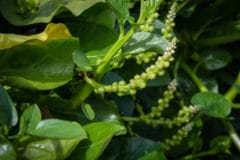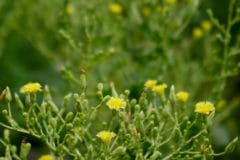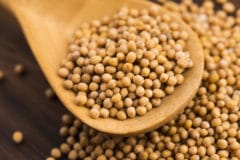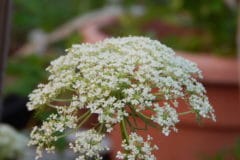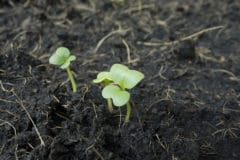Bolting Turnips
Unlike a bolting horse, you can’t stop a bolting turnip. There are a few things that can cause turnips to bolt, though, and you can control some of them.
Bolting Due to Weather
You can’t control the weather. While turnips are a cold weather crop that can be planted before the last frost date in your area, changes in temperature can cause your spring planting of turnips to bolt. If, after temperatures start to rise, cool or cold weather returns for a few days and nights before temperatures warm again, your turnips can be tricked into acting as if they have been though winter and are starting their second year of growth instead of their first.
In their second year of growth, turnips normally flower and produce seeds, so that’s what they do when they are tricked by a change from warm weather to cold and then back to warm again. The turnip begins to draw on the nutrients stored in its root and leaves to support the flowers and the seeds that follow, leaving the tough fibrous structure that is the equivalent of the plant’s skeleton.
Bolting Due to Soil Conditions
Turnip is known as a “mop-up crop” that you can plant in areas where you’ve previously grown crops like squash and sweet corn that draw a lot of nutrients from the soil. Still, all plants require soil that has some nutrients, and turnips can bolt if sufficient nutrients are lacking. You can prevent this by working 2 to 4 inches of compost or aged manure into the soil before planting your turnips.
The space where you plant your turnips should be well-drained, and have light, sandy or loamy soil.
Bolting Due to Lack of Moisture
Turnips need consistent watering not only to prevent the roots from becoming woody but also to prevent bolting. Make sure that your turnips receive 1 inch of water each week, and, because turnips are susceptible to mildews, use a soaker hose.
Bolting Due to Extended Periods of Hot Weather
While turnips need six to eight hours of full to partial sun each day, this is a cold weather crop that will not tolerate temperatures above 75°F (24°C). While you can plant successive crops of turnips every two to three weeks after your initial spring planting, the best practice is to stop planting turnips 10 to 11 weeks before you expect high temperatures to hit in your area. Wait to resume planting your turnips until temperatures drop back down into the comfort zone for your turnips.
What to Do With the Bolting Turnips
While both the greens and roots become tough after turnips bolt and, in addition, the greens become bitter, a bolting turnip presents you with the opportunity to try out other edible parts of the plant.
- The Flower Buds: When the flower buds appear, clip them along with greens from turnips that haven’t bolted and add the buds and greens to soups, salads, and stir fry. You can cook with the buds as you would with broccoli, but only heat the buds briefly. Because bolted turnips are intent on producing seeds, they will determinedly replace any flower buds you clip, so you can continue harvesting buds for as long as you enjoy them.
- The Flowers: When you and your family are ready to see what turnip flowers have to offer, stop snipping the buds and let them bloom. Use the flowers as garnishes for salads and soups.
- The Seed Pods: The tender seed pods are long and thin, and when they first appear on the plants, they are green, resembling pea pods, green beans, and other bean pods. You can enjoy them raw or cook them. If you would like to have some to enjoy in the winter, you can pickle them.
- The Seeds: Turnip pods turn the color of straw as they mature, and, like pea pods, they pop open when you squeeze them. The seeds inside are small and round, and they range from black to amber in color. Turnips are closely related to mustard, so you can use the tangy seeds whole or ground as you would mustard seeds. You can even grind them and a little liquid to create a mustard-like paste. Add vinegar to extend the shelf life of your turnip mustard.
Gathering Your Turnip Seeds While You May
To gather your turnip seeds, clip the pods and spread them out in the sun on a flat surface like a tray or a screen that will contain the seeds when the pods open. The drying pods will eventually split and spill their seeds. All you will need to do is separate the seeds from the pods and chaff, and store the seeds in a jar.
If you don’t have a large enough flat surface, you can clip the branches that bear the pods and put them in a brown paper grocery bag. Store them away from moisture while you allow them to dry until they have become brittle.
When the stems and pods are brittle, remove each stem and pop any pods hanging from it, allowing the seeds and chaff to fall back into the bag. Shake the bag so that the heavier seeds settle to the bottom while the lighter weight chaff remains on top.
Then, grab a handful of chaff and, while keeping your hands just above the bag, pass the chaff from hand to hand to separate more of the seeds from the chaff. Keep separating the seeds from the chaff one handful at a time, but save the stems and the chaff to use as mulch or in your compost.
When you’re done, you will likely have more seeds than you need for planting. Use as many as you want for seasoning in your kitchen. You also could give small jars of the seeds as gifts for others to use in their kitchens, or trade them with others who save seeds for seeds that you don’t yet have.
If you like sprouts, you can raise turnip sprouts by sowing the seeds close together in a shallow container and harvesting them as the first leaves emerge. The seeds should be so close that the emerging leaves form a leaf carpet.
